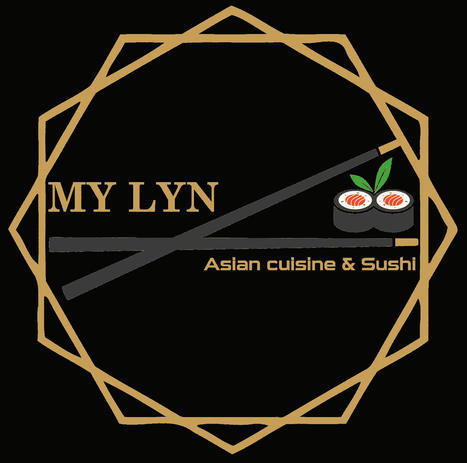#chinese deep fried skewers
Photo









Week 45/52: November 7th - November 13th 2022 | Vicky’s Birthday! 🍢
Her birthday is actually on the 15th but had to celebrate a week in advance because I will be in Calgary during it :-( We actually wanted to eat somewhere else but they were closed for filming even though Google maps said it was open. ANYWAY MORAL OF THE STORY: WE CAN’T EVER TRUST GOOGLE. We went to eat 夸父炸串 in Richmond (newly opened) which is technically the first ever 炸串 (deep fried skewer) place in YVR - very yum. Got the max spice level and it was delicious and not too oily. Seasoning was yum. Potato and rice cakes were god tier and the chicken wings were my favourite meats. So happy to finally try it after seeing Chinese mukbangers eat this like it’s rice 😭🙏
HAPPY 26TH BIRTHDAY VICKY 🎂🎂🎂
#365#52#ootd#skewers#deep fried skewers#chinese deep fried skewers#oak n fort grandpa jacket#grey champion hoodie#levis wedgie straight#adidas stan smith#103/52 outfits#orange juice#orange drink#will be taking a 3 week hiatus again bc i will be out of town without my laptop.... i will see everyone in december :') BRB heheheh#me suddenly feeling the need to write her a bday note on the back of our receipt#and drawing vicky the skewer cus she requested#hhhhhh im just gonna start drawing everyone fr#LOL#so funny sometimes#double heart necklace
8 notes
·
View notes
Text

Delving into 8 Thai dipping sauces. 🥫🇹🇭
🇹🇭 When you think of Thai cuisine, what comes to mind? Is it the vibrant flavors, the perfect balance of sweet, sour, salty, and spicy, or perhaps the variety of dishes that bring excitement to every meal ?
💡 One key element that enhances the complexity and distinct flavors of Thai food is its dipping sauces. More than just condiments, these sauces offer unique blends of tastes that complement a wide range of dishes. From the fresh, coastal flavors of seafood sauces to the spicy tang of northeastern varieties, Thai dipping sauces showcase the country's rich culinary diversity.
Let’s explore eight essential Thai dipping sauces, their flavors, ingredients, and the cultural significance that makes them so beloved. 💝
.
1. Nam Jim Seafood (Seafood Dipping Sauce)
Nam Jim Seafood is a vibrant and flavorful sauce that perfectly complements a variety of seafood dishes. Known for its spicy, tangy, and slightly sweet profile, this sauce is a staple in Thai cuisine, particularly in coastal regions where seafood is abundant. It is typically served with grilled, steamed, or fried seafood, such as shrimp, calamari, clams, and fish, enhancing the natural sweetness of the seafood with its bright and punchy flavors.
The origins of Nam Jim Seafood are deeply rooted in Thailand's coastal areas, where the freshness of the sea’s bounty is celebrated with bold and complementary flavors.
.
2. Nam Jim Suki (Sukiyaki Dipping Sauce)
Nam Jim Suki, also known as Sukiyaki dipping sauce, is a flavorful blend that perfectly accompanies Thai-style hot pots and Thai BBQs (Moo Ka Ta). This sauce is characterized by its sweet, sour, and mildly spicy profile. The origins of Nam Jim Suki can be traced back to the influence of Chinese and Japanese cuisines, which were adapted by Thai cooks to suit local tastes.
.
3. Nam Pla Wan (Fruit Dipping Sauce)
Nam Pla Wan is a unique Thai dipping sauce that offers a delightful mix of sweet, savory, and slightly salty flavors, designed to pair with fresh, tart fruits. This sauce is a perfect example of how Thai cuisine masterfully balances contrasting flavors to create a harmonious and satisfying taste experience.
Traditionally, it is served with sour fruits such as green mango, santol, rose apple, and guava. The sweetness of the sauce contrasts beautifully with the tartness of these fruits, creating a refreshing and balanced snack.
.
4. Nam Jim Ajaad (Thai Cucumber Relish)
Nam Jim Ajaad is a dipping sauce with vinegar as its main component, providing a sour flavor. Salt and sugar are added to give it a slightly sweet and salty taste. Key ingredients like sliced cucumber, chili, and shallots help create a well-rounded flavor and reduce the sharpness of the vinegar.
This sauce is commonly used with grilled satay skewers, particularly pork or chicken. It also pairs wonderfully with deep-fried appetizers like minced pork or shrimp toast, offering a cool and tangy bite that cuts through the richness of fried foods.
.
5. Nam Jim Gai (Sweet Chili Sauce)
Nam Jim Gai, commonly known as Thai sweet chili sauce, is beloved for its sweet, sour, and mildly spicy flavor. This sauce has a sticky texture that clings well to foods, making it a popular choice for dipping. It is most commonly served with fried or grilled chicken, but it's also an excellent dip for fried foods, Thai vegetable spring rolls, and Thai fish cakes. The sweetness and slight spiciness enhance the flavors of these dishes without overpowering them.
.
6. Nam Jim Jaew (BBQ Dipping Sauce)
Nam Jim Jaew is a smoky, tangy, and spicy dipping sauce that hails from the Isan region of Thailand, known for its bold and complex flavors. It is most commonly served with Thai-style grilled meats, such as grilled pork neck, where it adds a smoky, spicy flavor that enhances the taste of the meat.
Nam Jim Jaew reflects the flavors of northeastern (Isan) Thai cuisine, where grilled meats are a staple. The use of toasted rice powder is a distinctive feature of Isan cooking, adding a unique texture and nutty flavor to the sauce.
.
7. Prik Nam Pla (Spicy Thai Sauce)
Prik Nam Pla is a staple Thai sauce known for its strong, savory, and spicy flavor. It's a simple yet powerful condiment that is essential to many Thai meals. The combination of fish sauce and chilies reflects the Thai preference for strong, umami-rich condiments that can be adjusted to individual tastes.
.
8. Nam Jim Look-Chin (Tamarind Dipping Sauce)
Nam Jim Look-Chin is a popular Thai tamarind-based dipping sauce characterized by its sweet and spicy flavor that pairs perfectly with grilled meatballs or fried snacks.
.
Thai dipping sauces are an essential part of the culinary landscape, each offering a unique combination of flavors that enhances the dishes they accompany. From the tangy and spicy Nam Jim Seafood to the sweet and savory Nam Pla Wan, these sauces not only reflect the rich diversity of Thai cuisine but also its deep-rooted cultural traditions and the art of Thai cooking.
— — — — — — — — — — — — — — — —
ชวนส่อง 8 น้ำจิ้มยอดนิยมเคียงคู่กับอาหารไทย 🥫🇹🇭
หากทุกท่านนึกถึงอาหารไทย แน่นอนว่าท่านจะต้องนึกถึงรสชาติที่ผสมผสานกันอย่างลงตัวของรสเปรี้ยว หวาน มัน เค็ม และเผ็ดได้อย่างลงตัว รวมถึงการใช้วัตถุดิบ เครื่องเทศ และสมุนไพรนานาชนิด จนเกิดเป็นจานอาหารไทยที่มีรสชาติโดดเด่นและเป็นเอกลักษณ์
แต่ทุกท่านทราบไหมว่า หนึ่งสิ่งที่เปรียบเหมือนหัวใจสำคัญที่ช่วยเสริมรสชาติเมนูจานอาหารไทยให้อร่อยกลมกล่อมมากยิ่งขึ้น นั่นคือ “น้ำจิ้ม”
น้ำจิ้ม หรือเครื่องจิ้มของไทย ไม่ใช่เพียงแค่เครื่องเคียงเพื่อสร้างสีสรรค์ให้กับอาหาร
หากทว่า น้ำจิ้มแต่ละชนิดล้วนมีรสชาติที่เป็นเอกลักษณ์ซึ่งช่วยเสริมรสชาติเมนูอาหารต่างๆ ได้อย่างลงตัว ตั้งแต่รสชาติจัดจ้านสดชื่น เช่น น้ำจิ้มซีฟู้ด ไปจนถึงรสเผ็ดร้อนเข้มข้น เช่น น้ำจิ้มแจ่วจากทางภาคอีสาน ทั้งหมดนี้คือส่วนประกอบเพิ่มเติมที่สำคัญไม่แพ้ไปกับตัวอาหารจานหลักเลยทีเดียว ดังนั้น การเลือกน้ำจิ้มที่เหมาะสมจะช่วยเพิ่มความสมบูรณ์ของมื้ออาหารยิ่งขึ้น
มาสำรวจกันว่า น้ำจิ้มไทยยอดนิยมทั้ง 8 ชนิด มีอะไรบ้าง ?
.
1. น้ำจิ้มซีฟู้ด
น้ำจิ้มซีฟู้ดเป็นน้ำจิ้มที่มีรสชาติสดชื่นและกลมกล่อม เข้ากันได้ดีกับอาหารไทยหลากหลายชนิด โดยเฉพาะอย่างยิ่ง อาหารทะเล เพราะจะช่วยเพิ่มรสชาติความหวานตามธรรมชาติของอาหารทะเลสด ๆ ให้อร่อยยิ่งขึ้น ด้วยรสชาติเปรี้ยว เค็ม เผ็ด และหวานเล็กน้อย มักจะเสิร์ฟพร้อมกับอาหารทะเลย่าง นึ่ง หรือทอด เช่น กุ้ง ปลาหมึก หอย และปลา
2. น้ำจิ้มสุกี้
น้ำจิ้มสุกี้เป็นส่วนประกอบสำคัญที่ช่วยเพิ่มรสชาติและความอร่อยให้กับเมนูสุกี้ ปิ้งย่าง หมูกระทะของไทย ด้วยรสชาติที่กลมกล่อมลงตัวของความหวาน เปรี้ยว เค็ม เผ็ด ซึ่งรสชาติเหล่านี้ ผู้ทานสามารถสร้างสรรค์รสชาติที่เป็นเอกลักษณ์ของตัวเองได้อย่างอิสระ เช่น ปรับระดับเพิ่มหรือลดปริมาณพริกขี้หนู กระเทียม น้ำมะนาว ได้ตามความชอบ
สำหรับที่มาของน้ำจิ้มสุกี้นั้น เป็นการผสมผสานระหว่างวัฒนธรรมอาหารจีนและไทยที่ได้รับอิทธิพลซึ่งกันและกันมาอย่างยาวนาน และถูกนำมาปรับปรุงโดยชาวไทยเพื่อให้เหมาะกับรสชาติท้องถิ่น ทำให้เกิดเป็นรสชาติที่เป็นเอกลักษณ์และเป็นที่ชื่นชอบโดยทั่วไป
3. น้ำปลาหวาน
น้ำปลาหวาน ถ��อเป็นน้ำจิ้มเอกลักษณ์ของไทยที่นำเครื่องปรุงในครัวเรือนอย่างน้ำปลา น้ำตาลปี๊บ และน้ำมะขามเปียก มาผสมผสานกันจนได้รสชาติที่ลงตัว เหมาะสำหรับทานคู่กับผลไม้ที่มีรสเปรี้ยว เช่น มะม่วงดิบ กระท้อน ชมพู่ และฝรั่ง ซึ่งความหวานจากน้ำปลาหวานตัดกับความเปรี้ยวของผลไม้เหล่านี้ได้อย่างลงตัว เกิดเป็นเมนูอาหารยอดนิยมของทุกเพศทุกวัย
.
4. น้ำจิ้มอาจาด
น้ำจิ้มอาจาดเป็นเครื่องจิ้มที่มีรสชาติเปรี้ยวหวานเค็ม ชื่นใจ จากส่วนประกอบหลักอย่างน้ำส้มสายชู เกลือ น้ำตาล พร้อมกับส่วนผสมสำคัญอย่างเช่น แตงกวาหั่น พริก และหอมแดงซอย ซึ่งช่วยเพิ่มความกลมกล่อมและความสดชื่นได้อย่างดี โดยน้ำจิ้มนี้มักทานคู่กับหมูหรือไก่สะเต๊ะ นอกจากนี้ยังเข้ากันได้ดีกับของทอด เช่น ขนมปังหน้าหมู ปอเปี๊ยะทอด กุ้งชุบแป้งทอด
5. น้ำจิ้มไก่
น้ำจิ้มไก่ เป็นน้ำจิ้มที่โดดเด่นด้วยรสหวาน เปรี้ยว และเผ็ดเล็กน้อย เนื้อสัมผัสที่เหนียวหนืดเล็กน้อยของน้ำจิ้มไก่ช่วยให้น้ำจิ้มเกาะติดกับอาหารได้ดีขึ้น และช่วยเพิ่มอรรถรสในการรับประทาน
โดยทั่วไปน้ำจิ้มไก่มักจะเสิร์ฟคู่กับไก่ทอดหรือไก่ย่าง แต่ก็ยังเหมาะอย่างยิ่งกับอาหารทอดอื่นๆ เช่น ปอเปี๊ยะทอดและทอดมัน โดยรสชาติที่หวานและเผ็ดเล็กน้อยของน้ำจิ้มไก่จะช่วยเพิ่มความอร่อยให้อาหารโดยไม่กลบรสชาติหลักของจานนั้นๆ
6. น้ำจิ้มแจ่ว
น้ำจิ้มแจ่ว เป็นน้ำจิ้มรสเด็ดที่มีความหอมเป็นเอกลักษณ์เฉพาะตัวจากกลิ่นข้าวคั่ว มีต้นกำเนิดมาจากภูมิภาคตะวันออกเฉียงเหนือ(ภาคอีสาน)ของประเทศไทย ขึ้นชื่อในเรื่องของรสชาติที่จัดจ้าน เปรี้ยว เค็ม หวาน และเผ็ดร้อนกลมกล่อม โดยน้ำจิ้มแจ่วมักจะเสิร์ฟคู่กับเนื้อย่างแบบไทย เช่น คอหมูย่าง ไก่ย่าง หรือนำไปจิ้มกับข้าวเหนียว ทานคู่กับอาหารอีสานอื่น ๆ ก็เข้ากันเป็นอย่างดี
น้ำจิ้มแจ่วยังสะท้อนถึงวัฒนธรรมของอาหารอีสานที่มีการใช้ข้าวคั่วเป็นส่วนประกอบเด่น ช่วยเพิ่มรสสัมผัสที่กรุบกรอบ กลิ่นหอมที่เข้มข้น และรสชาตินัวกลมกล่อมยิ่งขึ้น
7. พริกน้ำปลา
พริกน้ำปลา หรือ น้ำปลาพริก เป็นน้ำจิ้มยอดนิยมของไทยที่นำมาทานคู่กับอาหารหลากหลายชนิด ด้วยรสเค็ม เผ็ด และอูมามิที่เข้มข้น ถึงแม้น้ำจิ้มชนิดนี้เต็มไปด้วยความเรียบง่าย หากว่า ก็เป็นรสชาติที่เต็มไปด้วยความเข้มข้นเป็นเอกลักษณ์ที่ช่วยเติมเต็มมื้ออาหารได้อย่างสมบูรณ์
8. น้ำจิ้มลูกชิ้น
น้ำจิ้มลูกชิ้น มีรสหวาน เปรี้ยว และเผ็ด ถึงจะขึ้นชื่อว่าเป็นน้ำจิ้มสำหรับลูกชิ้น แต่ก็สามารถเข้ากันได้ดีกับอาหารทอด ย่าง หรืออาหารทานเล่นอื่น ๆ เช่น หมูสับทอด ปลาทอด หรือผักสดหลากชนิด
.
น้ำจิ้มแบบไทยแต่ละชนิด ถือเป็นส่วนสำคัญของภูมิปัญญาทางอาหารที่สร้างสรรค์และสะท้อนถึงความหลากหลายทางวัฒนธรรมและการปรุงอาหารของไทย
.
#Thaifood #ThaiSELECT
#DITP #กรมส่งเสริมการค้าระหว่างประเทศ
#ThaiCuisine #อาหารไทย #ThaiDippingSauces #น้ำจิ้มไทย
2 notes
·
View notes
Text
A Foodie's Guide to Malaysian Cuisine

Malaysia, a melting pot of cultures, offers a culinary experience like no other. From bustling street food markets to high-end restaurants, Malaysian cuisine is a delightful fusion of Malay, Chinese, Indian, and indigenous influences, each contributing unique flavors and traditions.
Must-Try Dishes:
Nasi Lemak: Often considered Malaysia's national dish, Nasi Lemak is a fragrant rice dish cooked in coconut milk, served with sambal (spicy chili paste), anchovies, peanuts, boiled egg, and cucumber. This dish is a perfect balance of creamy, spicy, and crunchy textures.
Laksa: This spicy noodle soup comes in various regional versions. Penang's Assam Laksa, with its tangy fish broth, contrasts with the creamy, coconut-based Laksa Lemak found in Kuala Lumpur. Both are equally irresistible.
Satay: Skewers of marinated meat, typically chicken or beef, are grilled to perfection and served with a rich peanut sauce. This street food staple is a must-try for any meat lover.
Char Kway Teow: A popular street food, this stir-fried flat noodle dish is packed with prawns, Chinese sausage, eggs, and bean sprouts, all cooked in a savory soy sauce.
Rendang: This slow-cooked dry curry is made with tender pieces of beef simmered in coconut milk and a blend of spices until they reach a deep, flavorful intensity. Originally from Indonesia, Rendang is a festive dish that's deeply ingrained in Malaysian culture.
Sweet Treats:
Cendol: A refreshing dessert made of shaved ice, coconut milk, green rice flour jelly, and palm sugar syrup. It's perfect for cooling down in Malaysia's tropical climate.
Kuih: These bite-sized snacks come in various shapes, colors, and flavors. Made from rice flour, coconut, and pandan leaves, Kuih are a testament to Malaysia's rich culinary heritage.
Where to Eat:
Exploring Malaysia's food scene means visiting both humble hawker stalls and upscale eateries. Cities like Penang, Kuala Lumpur, and Malacca are famous for their diverse food offerings. The night markets, or "pasar malam," are especially great for sampling a wide range of dishes in one place.
Embrace the rich tapestry of Malaysian cuisine, and let your taste buds embark on an unforgettable journey. From spicy curries to sweet desserts, there's something to delight every foodie in Malaysia.
0 notes
Text
Here are the top 20 Japanese food items with details of their ingredients and origin:
1. Sushi - Raw fish, rice, nori seaweed. Originated in Japan as a way to preserve fish.
2. Ramen - Wheat noodles, broth (pork, chicken, or fish-based), meat, vegetables. Originated in China but popularized in Japan.
3. Tempura - Battered and deep-fried seafood and vegetables. Originated in Portugal but became a staple of Japanese cuisine.[1][2]
4. Yakitori - Grilled chicken skewers. Originated in Japan as a way to utilize all parts of the chicken.[1][2]
5. Miso Soup - Fermented soybean paste, dashi broth, tofu, seaweed. Originated in China but integral to traditional Japanese cuisine.[1][4]
6. Udon - Thick wheat flour noodles, served in a broth. Originated in Japan.[1][2]
7. Soba - Thin buckwheat noodles, served hot or cold. Originated in Japan.[1][2]
8. Okonomiyaki - Savory pancake with cabbage, meat, seafood, and a variety of toppings. Originated in the Kansai and Hiroshima regions of Japan.[1][2]
9. Takoyaki - Battered and grilled octopus balls. Originated in Osaka, Japan.[1][2]
10. Gyoza - Dumplings filled with minced meat and vegetables. Originated in China but popularized in Japan.[1][2]
11. Tonkatsu - Deep-fried pork cutlet. Originated in Japan, influenced by Western cuisine.[1][2]
12. Yakisoba - Stir-fried wheat noodles with meat and vegetables. Originated in China but adapted in Japan.[1][2]
13. Onigiri - Rice balls, often wrapped in nori seaweed. Originated in Japan as a portable food.[1][2]
14. Katsu Curry - Breaded and fried pork cutlet served with Japanese curry sauce. Originated in Japan, influenced by Indian curry.[1][2]
15. Sukiyaki - Thinly sliced beef and vegetables cooked in a sweet soy-based broth. Originated in Japan.[1][2]
16. Shabu-Shabu - Thinly sliced meat and vegetables cooked in a hot pot. Originated in Japan, influenced by Chinese hot pot.[1][2]
17. Unagi - Grilled freshwater eel. Originated in Japan as a summer delicacy.[1][2]
18. Yakimono - Grilled or pan-fried dishes, such as yakitori and teriyaki. Originated in Japan.[1][2]
19. Kushikatsu - Deep-fried breaded meat and vegetable skewers. Originated in Osaka, Japan.[1][2]
20. Kobe Beef - Highly marbled beef from the Hyogo prefecture of Japan, known for its tenderness and flavor.[1][5]
Sources
[1] Japanese Food: 45 Traditional Dishes to Look For in Japan https://www.willflyforfood.net/the-ultimate-japanese-food-guide-what-to-eat-in-japan-and-where-to-try-them/
[2] 30 Japanese Dishes You Need To Try At Least Once - Tasting Table https://www.tastingtable.com/757923/japanese-dishes-you-need-to-try-at-least-once/
[3] Japanese basics: Essential Japanese cooking equipment | JustHungry https://justhungry.com/2006/12/japanese_basics_essential_cook.html
[4] List of Asian cuisines - Wikipedia https://en.wikipedia.org/wiki/List_of_Asian_cuisines
[5] Buy Japanese Ingredients Online in the UK | Fine Food Specialist https://www.finefoodspecialist.co.uk/world-cuisines/japanese-ingredients

0 notes
Text
Malaysian Snacks on the World Stage: Irresistible Bites from the East
Introduction
Malaysia, a nation celebrated for its diverse culture and delectable cuisine, has made a significant mark on the global culinary stage. While Malaysian restaurants worldwide introduce people to the wonders of Malaysian cuisine, the country's snack industry is also gaining traction. In this blog, we'll explore the growing popularity of Malaysian snacks in the international market and how food and beverage exports play a key role in sharing these irresistible bites from the East.
A Fusion of Flavors: Malaysian Snack Culture
Malaysian snacks offer a delightful fusion of flavors, reflecting the country's multicultural heritage. The influence of Malay, Chinese, Indian, and indigenous cultures can be seen in the wide variety of snacks available. Here are some iconic Malaysian snacks that have garnered international attention:
Keropok: These crispy, addictive deep-fried snacks come in various forms, such as keropok lekor (fish crackers) and keropok udang (prawn crackers). They are often enjoyed with dipping sauces or on their own as a crunchy treat.
Kuih: Malaysia's assortment of kuih (bite-sized desserts) is a testament to the nation's sweet tooth. From colorful onde-onde to pandan-flavored seri muka, these bite-sized delights are loved for their sweet and sometimes savory flavors.
Satay: While satay is more commonly known as a skewered and grilled dish, satay-flavored snacks, such as satay-flavored potato chips or peanuts, are gaining popularity for their bold and savory taste.
Cucur: Cucur refers to fritters made from various ingredients like sweet potatoes, bananas, and corn. These crispy and flavorful snacks are often enjoyed with a cup of hot tea or coffee.
Salted Egg Yolk Chips: A modern twist on traditional snacks, salted egg yolk chips have become a sensation in Malaysia and beyond. The rich, savory, and slightly spicy flavor is irresistible.
Malaysian Snacks Going Global: Food and Beverage Exports
Malaysian snack manufacturers have embraced the opportunity to share their delicious creations with the world through food and beverage exports. Here's how they're making their mark:
Diverse Packaging: Malaysian snack companies are packaging their products in various sizes and formats, making them suitable for both local markets and international consumers. This adaptability allows snacks to travel far and wide.
Online Retail: With the rise of e-commerce, Malaysian snacks are increasingly available for international customers. Many online platforms and specialty stores cater to consumers looking to explore the flavors of Malaysia.
Export Quality Control: To ensure consistency and quality, snack manufacturers are implementing strict quality control measures to meet international standards. This dedication to quality boosts the appeal of Malaysian snacks in foreign markets.
Innovation and Fusion: Malaysian snack companies are experimenting with flavors and ingredients to create innovative and fusion snacks that appeal to a wider audience. These unique creations often draw inspiration from traditional Malaysian recipes.
Conclusion
Malaysian snacks are captivating palates worldwide with their irresistible flavors and cultural diversity. As food and beverage exports continue to play a pivotal role in sharing these bites from the East, more people are discovering the magic of Malaysian snacks. Whether you're indulging in a bag of keropok while watching a movie or savoring the sweet satisfaction of kuih with tea, Malaysian snacks offer a tantalizing journey through the vibrant and diverse flavors of Malaysia.
0 notes
Text
Exploring the Delights of Jain Cuisine and Multi-Cuisine Vegetarian Restaurants in India
Introduction:
India, a land of diverse cultures and cuisines, offers a culinary journey like no other. Among the plethora of gastronomic experiences, Jain cuisine and multi-cuisine vegetarian restaurants stand out for their unique flavors and vibrant offerings. In this article, we delve into the enchanting world of Jain food and the charm of famous multi-cuisine vegetarian restaurants in India.
Part 1: Savoring Jain Delicacies
Jainism, an ancient Indian religion known for its principles of non-violence and non-possession, has deeply influenced its cuisine. Jain food, abstaining from root vegetables and certain other ingredients, showcases a remarkable balance of flavors and textures. Let's explore some famous Jain dishes that tantalize the taste buds:
Dal Baati Churma: A quintessential Rajasthani delight, this dish features wheat dumplings (baati) served with lentil curry (dal) and a sweet crumbled wheat dessert (churma).
Khandvi: A popular Gujarati snack made from gram flour, yogurt, and spices, rolled into delicate bite-sized rolls.
Paneer Tikka: Marinated paneer (Indian cottage cheese) chunks, skewered and grilled to perfection, creating a delectable appetizer.
Puri-Shrikhand: A delightful combination of deep-fried bread (puri) paired with shrikhand, a sweet yogurt-based dessert flavored with saffron and cardamom.
Muthia: Another Gujarati gem, muthia are steamed dumplings made from grated vegetables and chickpea flour, seasoned with spices.
Part 2: Exploring Multi-Cuisine Vegetarian Restaurants
India's culinary landscape is also dotted with a myriad of multi-cuisine vegetarian restaurant india that cater to a wide range of palates. These establishments expertly blend various cuisines, creating a symphony of flavors. Here are some renowned multi-cuisine vegetarian restaurants to tantalize your taste buds:
Saravana Bhavan: A global chain originating from Chennai, Saravana Bhavan is celebrated for its South Indian specialties like dosas, idlis, and uttapams.
Rajdhani Thali Restaurant: Known for its elaborate Rajasthani and Gujarati thalis, this restaurant offers an array of dishes served in traditional thali style.
Mainland China: A favorite for lovers of Indo-Chinese cuisine, Mainland China boasts a vast menu featuring delectable dishes like vegetable manchurian and hakka noodles.
Burma Burma: Taking inspiration from Burmese cuisine, this restaurant offers unique dishes like tea leaf salad and khowsuey, transporting diners to Myanmar.
Punjab Grill: Indulge in rich North Indian flavors at Punjab Grill, with dishes like paneer makhani and dal makhani that showcase the essence of Punjab.
Conclusion:
Famous Jain Food Menu India exemplify the culinary diversity and innovation that India has to offer. Whether you're exploring the intricate flavors of Jain delicacies or indulging in the fusion of multi-cuisine delights, these culinary experiences are a testament to India's rich heritage and the creativity of its chefs. So, the next time you embark on a gastronomic adventure, make sure to savor the delights of Jain cuisine and the offerings of famous multi-cuisine vegetarian restaurants across the country.
0 notes
Text
Are there any specific cuisine options that are commonly available in all-you-can-eat establishments in Osaka?

Osaka, the culinary capital of Japan, is renowned for its vibrant food scene and diverse range of cuisines. All-you-can-eat establishments in Osaka offer a All you can eat sushi plethora of options to satisfy every palate. From traditional Japanese delicacies to international fare, these venues cater to a wide array of tastes. In this article, we will explore some of the specific cuisine options commonly available in all-you-can-eat establishments in Osaka.
Japanese Cuisine:
Japanese cuisine takes center stage in Osaka's all-you-can-eat establishments, offering an authentic culinary experience. Sushi and sashimi are often the highlight, featuring fresh seafood like tuna, salmon, and yellowtail. Tempura, with its lightly battered and deep-fried goodness, is another popular choice. Donburi bowls, such as gyudon (beef rice bowl) and katsudon (pork cutlet rice bowl), are often available, providing a hearty and filling meal. Other Japanese favorites like yakitori (grilled skewered chicken), okonomiyaki (savory pancake), and takoyaki (octopus-filled balls) are commonly found, showcasing Osaka's local specialties.
Barbecue:
Barbecue, known as yakiniku in Japanese, is a beloved dining experience in Osaka. All-you-can-eat yakiniku establishments offer a wide variety of marinated meats, including beef, pork, and chicken, along with an assortment of fresh vegetables. Customers can grill their own meats at the table, enjoying the sizzling sounds and tantalizing aromas. Accompaniments like dipping sauces, rice, and side dishes complement the barbecue feast, making it a favorite choice for meat lovers.
Korean Cuisine:
Osaka's all-you-can-eat establishments often feature Korean cuisine, reflecting the city's multicultural culinary landscape. Korean barbecue, similar to yakiniku but with a distinct flavor profile, is a popular option. Thinly sliced beef and pork are grilled at the table, accompanied by an array of side dishes like kimchi (spicy fermented vegetables) and japchae (stir-fried glass noodles). Korean hot pots, such as budae jjigae (spicy army stew) and kimchi jjigae (kimchi stew), are also commonly available, offering a comforting and flavorful dining experience.
Chinese Cuisine:
Chinese cuisine holds a prominent place in Osaka's all-you-can-eat scene. Dim sum, a style of Chinese cuisine featuring small bite-sized portions, is a favorite choice for many diners. Steamed dumplings, buns, and spring rolls are often on the menu, providing a variety of fillings like pork, shrimp, and vegetables. Chinese stir-fried dishes, such as mapo tofu (spicy tofu and minced pork) and kung pao chicken (spicy stir-fried chicken with peanuts), offer a burst of flavors and textures.
Western Cuisine:
To cater to diverse tastes, all-you-can-eat establishments in Osaka often include Western cuisine options. Pizza and pasta are commonly available, with various toppings and sauces to choose from. Hamburger steaks, fried chicken, and French fries are also on offer, providing a taste of classic comfort food. Salad bars with a selection of fresh vegetables, dressings, and toppings allow diners to create their own healthy creations.
Desserts:
No all-you-can-eat experience is complete without indulging in delectable desserts. Osaka's establishments offer an assortment of sweet treats to satisfy every sweet tooth. Traditional Japanese desserts like mochi (glutinous rice cakes) and dorayaki (red bean pancakes) are often available. Soft-serve ice cream stations with a variety of flavors and toppings are popular among both children and adults.
1 note
·
View note
Link
0 notes
Link
0 notes
Text



JAPANESE TOFU ROCKS
Back in Canada, many people think eating tofu (or soybean curd) is as exciting and tasty as eating plain yogurt — meaning tasteless.
After moving to Japan I changed my feelings about tofu and now I’m an advocate for eating tofu — cuz tofu in Japan ROCKS!!!
Tofu is well loved by the masses here in Japan as a nourishing and tasty comfort food. I’m into healthy eating so I eat tofu pretty regularly and “nosh” on all kinds of amazing tofu dishes.
I have 4 must-eat tofu dishes, — Yudofu (Nabe or hot-pot tofu); Mabo-Tofu ( Japanese version of a traditional Chinese dish of tofu and ground beef packed with flavor from red-hot chili oil and peppercorns); Agadashi Tofu (a classic deep-fried tofu appetizer served in Japanese izakaya or pubs; and my personal favorite tofu dish — the one that really blows me away is Dengaku Tofu (skewered tofu grilled over a charcoal fire and brushed with a sweet and savory orange miso sauce.
A few days ago I had a craving for Dengaku Tofu and lucky for me, there’s a famous Dengaku Tofu restaurant not too far from my home. My wife and I jumped in the car for a 40-minute drive through winding mountain roads to reach the small historical town of Iga-Uno and our destination — Wakaya Tofu Bistro.
Here are two interesting facts about Iga-Uno and Wakaya. If you’re into Japanese martial arts, you’ll be happy to know that Iga was a warrior town in feudal Japan and gave birth to the Iga-ryu ninja, one of Japan’s leading schools of ninjutsu. If you have a good eye you can spot local townspeople dressed as ninjas roaming the streets on certain occasions. Secondly, you can say Wakaya is a well-established eatery since it’s been serving Dengaku Tofu for over 100 years!
A typical order of Dengaku Tofu comes to you on 16 skewers in a “cool” wooden box. To begin with you slide the tofu off the sticks into your bowl of steaming rice.
You end your heavenly tofu meal with a happy face and a ”gochisosama deshita”.
1 note
·
View note
Photo




𝙄 𝙝𝙖𝙫𝙚 𝙖 𝙜𝙧𝙚𝙖𝙩 𝙖𝙥𝙥𝙧𝙚𝙘𝙞𝙖𝙩𝙞𝙤𝙣 𝙛𝙤𝙧 𝙩𝙝𝙚 𝘼𝙨𝙞𝙖𝙣 𝙘𝙪𝙡𝙩𝙪𝙧𝙚 𝙞𝙣 𝙩𝙚𝙧𝙢𝙨 𝙤𝙛 𝙘𝙪𝙡𝙩𝙪𝙧𝙚, 𝙘𝙧𝙚𝙖𝙩𝙞𝙫𝙞𝙩𝙮, 𝙙𝙚𝙨𝙞𝙜𝙣 & 𝙗𝙪𝙨𝙞𝙣𝙚𝙨𝙨. 𝙏𝙝𝙞𝙨 𝙥𝙤𝙨𝙩 𝙞𝙨 𝙙𝙚𝙙𝙞𝙘𝙖𝙩𝙚𝙙 𝙩𝙤 𝙩𝙝𝙚 𝙖𝙧𝙩 & 𝙘𝙪𝙡𝙩𝙪𝙧𝙚 𝙤𝙛 𝘼𝙨𝙞𝙖𝙩𝙞𝙘 𝙥𝙚𝙤𝙥𝙡𝙚.
0.033 }{ HARAJUKU WEDNESDAY 🖤}{ "Yesterday’s adventures consisted of roaming around San Francisco’s oriental hotspots! Every so often, I like to visit one of the most famous oriental districts in the U.S: SF’s Chinatown & Japantown. 💴
My first stop was Chinatown’s “Golden Gate Fortune Cookie Factory”, where they make about 10,000 fresh & partially handmade fortune cookies a day! 🥠 It’s always a delight taking home a bag of fresh cookies with inspirational & sometimes random fortune messages. While walking along the long streets of Chinatown munching on fortune cookies, you can find many vendors & storefronts selling food & cute trinkets like: coin purses, journals, accessories & fashion with traditional Chinese patterns & simulated silks. Great stuff to buy for keepsakes or gifts.🧧
The second half of the day was spent in Japantown, where I shopped at “Amiko’s Boutique” for Kawaii plushies🧸 & later dug deep into Japanese cuisine. 🥢 I’ll be honest, I’m not open to eating just ANYTHING; I’m for damn sure not eating squids or octopuses. Luckily for me, Japanese food has a wide range of dishes that are prepared in many different ways. During my explorations around Japantown, I found this cute street food vendor that had a menu with many different food options & boy did I order A LOT! My whole order consisted of a special tempura skewer fish cake (Kushiten), deep fried fish patties (Korokke), fried noodles (Yakisoba) & rice dumplings (Dango). All of my food was packed very neat & compact, but no lie I had food that would last me for 2 days! What a treat!" 😋
- Déesse
―――――――――――――――――――――――――――
𝙁𝘼𝙎𝙃𝙄𝙊𝙉 𝘿𝙀𝙏𝙎:
LUXECODE
• LC> Puzzle Bag | {LOCATION: TRES CHIC EVENT}
{LINK HUB}
―――――――――――――――――――――――――――
NUDE
• theSATOset (Skirt & Boots) | {LOCATION: MAINSTORE}
{LINK HUB}
#luxury#ASIANSTYLE#harajuku#culture#LeLutka#inithium#inithium kupra#black#black women#sexy#Latina#AFROLATINA#LATINA WOMEN#CALIFORNIA#japantown#chinatown#slstyle#fashion#SL#slavi#slfashion#slavatar#SLINFLUENCER#sllifestyle#SecondLife#secondlifefashion#secondlifeblog#secondlifeblogger#secondlifeavi#secondlifelifestyle
1 note
·
View note
Text
Popular Food from the Best Restaurants in High Street Kensington - Romulo Cafe
Filipino street food, like most of its cuisine, is primarily the result of adversity. As a colonial country, using costly and high-quality meats was prohibitively expensive and impossible to obtain, therefore less desirable and more economical parts of the animal had to be used instead. Prefer Filipino foods from the best restaurants in high street Kensington today.
These pieces have been transformed into some of the most delectable and reasonably priced bites of food, which is a testament to the adaptability and creativity of the Filipino people.
Filipinos from high street Kensington cafe just innately make you feel at home. Even strangers are invited to dine with them during fiestas in their modest home. This custom could also reflect one's socioeconomic standing. Beside your plate will be meals whose recipes have been passed down through generations, served with golden cutlery and utensils. The hosts would even provide food for you to take home after the celebration. Simple actions like this demonstrate the fact that some things are beyond the reach of money.
Popular Filipino Cuisine-
Ngo Hiong/NgoYong
Vegetables and bamboo shoots are wrapped in spring roll wrappers, deep-fried, and spiced with Chinese five spice powder (ngo hiong), and a dish that is most popular in the Visayas region. The rolls are crunchy and flavorful, and they taste great on their own or dipped in vinegar or a thick, sweet sauce that also has a 5 spice flavor.
Adidas
Filipinos from the best restaurants in Kensington London become inventive not only with their culinary creations but also with their dish names. Locals refer to grilled chicken feet as "adidas" since the three-striped shoe company matches the chicken foot's three toes.
Kwek Kwek/Tokneneng
A well-known Philippine street snack is kwek kwek. Either name refers to hard-boiled eggs that have been battered and fried, much like tempura. Tokneneng (chicken or duck eggs) and Kwek Kwek (quail eggs) are delectable, rich, and crispy on their own.
They are typically served with either fiery vinegar or a sweet soy dipping sauce. The batter is frequently dyed orange with annatto seeds, but the flavor is unaffected.
Banana Cue
In the Philippines, banana cue Bananas from Saba are deep-fried with margarine and sugar caramelized, then skewered. The caramelized sugar develops a thin candy coating around the bananas during cooking, giving them a beautiful texture in addition to softening and sweetening them. Imagine them as better-textured versions of bananas.
Wrap Up
Yes, many Filipino dishes from the best restaurants in high street Kensington may seem strange to others; after all, not everyone eats chicken guts on a stick or hatching bird embryos. Yet, it's crucial to be a fearless eater who is prepared to try everything at least once if you want to be able to fully immerse yourself in the rich food culture of the Philippines. When you've already given something a go and determined that it's not for you, it's simple to reject it. Otherwise, give it a shot before you pass judgment.
#best restaurants in high street Kensington#high street kensington cafe#best restaurants in Kensington London
0 notes
Text
Best Bengali Food Menus for Your Upcoming Wedding Ceremony
Foods are an important part of the wedding because it helps the people to make their event memorable. We know that Bengalis like to eat various foods, so the Bengali wedding menu section plays a vital role. Weddings are not exempt from the rule that food elevates any occasion! A time had passed when family members used to plan the entire wedding.
So this blog will discuss the best Bengali food menu for the upcoming wedding ceremony. Organise it systematically, and people are considered the best wedding catering in Kolkata. Choosing the right catering services for your wedding will help avoid headaches. So, if your wedding is coming soon, this blog will be helpful for you.
A few dishes are very popular on the Bengali wedding menu. We know that all the Bengali food items are delicious and make your wedding memorable. A few Bengali food items are listed below.

Starter
The starter is an important part of the Bengali wedding food menu and involves both veg and non-veg items. A few common starters in Bengali weddings are listed below.
Vegetarian starter
Paneer tikka kabab
A well-liked wedding appetizer is paneer tikka. You can order the smoky tandoori snack by skewering spicy paneer cubes, onion, and capsicum in creamy yoghurt and then grilling them in the oven.
Veg cutlet
Vegetable cutlets are another savoury vegan meal item for weddings. A favourite Bengali evening snack is often referred to as vegetable chop.
Mochar chop
Your wedding food will have a traditional touch with deep-fried dumplings made with banana flowers. This delicious colonial treat is a wonderful nibble to offer your visitors and is made from boiling banana flowers, potatoes, almonds, and flavorful spices.
Non-vegetarian starter
Egg devil
This is the mouthwarming starter in the Bengali wedding food menu. Slices of the egg are wrapped in a spicy coating to make the delectable delicacy known as "egg devil." Salads and kasundi are served beside it.
Fish cutlet
Fish cutlet is a popular food item on the Bengali food menu and a very delicious snack. We know that Bengalis mainly prefer food items, so you should add this food item to your wedding starter.
Chicken lollipop
This Indo-Chinese appetizer is becoming increasingly popular in the modern Bengali wedding menu. Chicken lollipops are extremely hot and spicy appetizers.
Main course
Every wedding catering service provides the guests with the best quality service and food items. It will help you to make their event memorable and amazing.
Vegetarian menu
Koraisutir kochuri
Koraishutir kochuri is the popular veg food item on the Bengali food menu and is considered in the main courses. This is among the greatest vegetarian wedding meal ideas, and it is typically served with aloo dum gravy or Chana dal.
Echorer dalna
Schroer data is the famous veg food item on the Bengali wedding menu. A delicious option on the Bengali Wedding menu is anchored data or raw jackfruit curry.
Misti pulao
Most Bengali events serve this well-known dish. It is a flavorful yellow pulao with sweet undertones that pairs beautifully with a hot, spicy curry.
Dhokar dalna
A popular Bengali meal called Dhokar Dalna is created from spiced channa dal koftas, or lentil cakes cooked before being drenched in a curry made with tomatoes and coconut.
Non-vegetarian
Fish paturi
You should include this food item in your Bengali wedding food menu. Before being cooked on the banana leaf, the fish is marinated with mustard paste, curd, and many spices. Fish like bhetki or hilsa work best for this recipe.
Mutton Kosa
This is a popular and traditional food item on the Bengali wedding menu. It is mainly served with steamed rice, pulao and rumali roti.
Chicken/Biriyani
Most of the famous catering services in Kolkata serve Biriyani as the main course. It is very common in Indian wedding menu lists.
Chicken cheap
One of the most well-known chicken side dishes, chicken chaap, will win your heart and leave you wanting more over and over.
Desert
Dessert is the sweetest section of the Bengali wedding food menu. In this section, guests will get various types of sweet items.
Rosogolla
The most well-known Bengali dessert, rosogolla, is a ball-shaped chenna dumpling covered in sweet syrup. So you must include this food item in your Bengali wedding food menu.
Sandesh
This is the popular and common dessert on the Bengali wedding menu, and this iconic Bengali delicacy is composed of chenna, milk, and sugar.
Final word
These are the favorite food items you should add to your wedding menu list to make your wedding menu memorable. In order to set a proper Bengali menu, you need to contact the best catering services in Kolkata, who can serve all the food items at an affordable price with proper hygiene.
If you have another food item and you want to add it to your Bengali wedding menu list, you can share that with us by commenting.
0 notes
Text
Take Asian Food Once and for all Health

sushi baden baden
Crisp organic stir-fries from Japan, bowls of sizzling noodle soup using mint and coriander from Vietnam, spicey jungle curries with Thailand, and fill-you-up sushi rolls because of Japan. These are are just some of the Asian containers that are tempting some of our taste buds and successful the tick with approval from dieticians around the globe.
restaurant baden baden
With its focus on vegetables, rice, crystal clear soups, noodles, homegrown fruit, fish and toned meat; Asian foodstuff is light, nevertheless filling. It is typically low in fat, by means of most recipes in need of only small amounts involving vegetable oils with regard to cooking. Sweets are generally healthier too, along with non-e of the wealthy desserts and pastries of European cuisines. Traditionally, healthy snack foods are eaten concerning meals to help stay away from hunger pangs, and to distribute food intake over the morning.
Eating for a Nutritious Heart
There are many purpose nutritionists recommend Cookware fare for a nutritious heart:
Omega 3 fats from the prawns, scallops, mussels, crabs, abalones and other species of fish that is so everywhere in Asia.
Vitamin e antioxidant from cashews, nuts, almonds and other nut products and seeds.
Phytoestrogens from tofu, tempeh and soy cold drinks.
Antioxidants from the several green vegetables, herbs, garlic clove, onions and green leaf tea.
All these food variables combine to keep as well as clear and clear of build-up, and to allow lower cholesterol together with blood pressure. The complete fat in Hard anodized cookware food tends to be small and, because flower oils are desired for cooking, fats are also kept for a minimum.
Fighting Tumor and the Aging Approach
The abundance associated with vegetables, fiber-rich innovative herbs (all gently cooked or offered raw), antioxidants, and additionally phytochemicals in the Asian kitchenware diet, make it succeed in your favor to protect with many cancers in addition to slow the aging process.
Eating plan for Diabetes
A person with diabetes should have some sort of repertoire of Asiatische recipes in their your kitchen. This is because those issues with the Asian eating plan which make it great for weight control along with heart health, additionally make it a must meant for diabetes management. Get pleasure from meals and carbohydrate food spaced evenly, fresh fruit and regularity for dessert, a good amount of flavour without body fat, variety and taste.
Which Dishes usually are Best?
Chinese
Healthy and balanced choices: Steamed gray sims or wontons, steamed fish by using black bean spices, combination vegetables, chow mein dishes, stir-fry meat, chicken and seafood dishes using vegetables, crab together with corn soup, very clear soup with noodles or dumplings, san choy bau, tofu tossed with greens, plain boiled grain, Chinese green tea, jasmine tea.
Eat now and again: Deep-fried entrees which include prawn cutlets, deep-fried dim sims, spring and coil rolls, fried meals such as sweet and additionally sour, crispy skin color chicken, fried hemp, Peking duck, pig spare ribs, toast ice-cream.
Japanese
Wholesome choices: Noodles by means of fish, chicken and also pork, noodle cereal, sashimi (raw tuna or salmon), steamboat dishes, teppanyaki-style barbecues, sushi nori throws, steamed rice.
Feed on occasionally: Tempura (deep-fried seafood and vegetables).
Vietnamese
Healthy options: Clear hot soups (pho) with roasted chicken or beef, noodle soups, meat, sea food or chicken salads, stir-fry meat or even scallops with veges, fresh prawn almond paper rolls, smoked pork skewers, chook with lemon yard, steamed ginger species of fish, stir-fried mixed vegetables and fruits, jasmine rice.
Try to eat occasionally: Coconut-based curries, deep-fried finger certain foods such as crab cakes and spring moves.
Indian
Healthy solutions: Dry curries from meat, chicken or simply vegetables, lean meats kebabs, tandoori hen or lamb, dhal, naan and roti bread, boiled grain, cucumber and yogurt sambal, chutneys.
Consume occasionally: Deep-fried kids finger foods such as samosas and bhajias, melted breads such as chapati and puri, pappadums, parathas.
Thai
Good choices: Thai gound beef salad, satays, dry up curries, stir-fry steak, chicken or fish and shellfish with vegetables, transparent hot and hot prawn soup (tom yarn goong), cooked chicken satays, jasmine rice.
Eat from time to time: Coconut-based curries like Thai green curry, deep-fried finger ingredients such as crab cakes and spring goes, crispy fried noodles.
MY LYN Asian Cuisine & Sushi
Sushi Restaurant, Asian Food Restaurant, Best Restaurant Baden Baden.
Phone: +49 7221 3950750
Website : www.mylyn-asia.com
Onlineshop: www.mylyn.asia
Address: Lichtentaler Straße 19, 76530 Baden Baden, Germany.
Business Email: [email protected]
Owner name: Hong Quan Nguyen
Payment Method: Cash and credit cards
Hour: Monday to Sunday 11:30-22:30
1 note
·
View note
Text
Japanese cuisine, also known as washoku, is a traditional style of cooking that is deeply ingrained in the culture and history of Japan. It is characterized by its emphasis on fresh, seasonal ingredients and minimalistic presentation.
One of the key principles of Japanese cuisine is the use of fresh, seasonal ingredients. This means that the dishes and flavors change depending on the time of year, with different fruits and vegetables coming into season at different times. This approach is not only healthier, as the ingredients are at their peak nutritional value, but it also allows for a greater variety of flavors and textures throughout the year.
Another important aspect of Japanese cuisine is its minimalistic presentation. Dishes are often arranged in a simple, elegant manner, with an emphasis on showcasing the natural beauty of the ingredients. This is in contrast to Western cuisine, which often relies on heavy sauces and complex seasonings to add flavor.
Sushi is one of the most well-known and popular dishes in Japanese cuisine. It is made from vinegar-flavored rice, which is often combined with raw fish and other seafood, such as shrimp and octopus. Sashimi, another popular dish, is similar to sushi, but it is served without the rice.
Ramen is another popular Japanese dish. It is a type of Chinese-style noodle soup that has been adapted to the Japanese palate. Ramen comes in many different variations, with different types of broth, toppings, and noodles. Some popular toppings include sliced pork, green onions, and soft-boiled eggs.
Tempura is another classic Japanese dish, which consists of seafood or vegetables that have been coated in a light batter and deep-fried. The batter is typically made from flour, egg, and water. The result is a crispy, light, and delicate dish that is usually served with a dipping sauce.
Japanese cuisine also includes a variety of grilled dishes, such as yakitori, which is skewered and grilled chicken, and unagi, which is grilled eel. These dishes are often served with a sweet soy-based sauce and are a popular menu item in izakaya, or Japanese pubs.
In addition to its delicious and healthy food, Japanese cuisine is also known for its emphasis on etiquette and manners. For example, it is considered impolite to slurp your noodles when eating ramen, and it is also considered rude to leave food on your plate.
In conclusion, Japanese cuisine is characterized by its emphasis on fresh, seasonal ingredients, minimalistic presentation, and a wide variety of dishes that include sushi, sashimi, ramen, tempura, and grilled dishes. It has become a popular cuisine worldwide and is known for its delicious and healthy food as well as its emphasis on etiquette and manners.

0 notes
Photo

Where’s Phoebe?
Centipedes (from the New Latin prefix centi-, “hundred”, and the Latin word pes, pedis, “foot”) are predatory arthropods belonging to the class Chilopoda of the subphylum Myriapoda, an arthropod group which also includes millipedes and other multi-legged creatures. Despite the name, centipedes can have a varying number of legs, ranging from 30 to 354. Centipedes always have an odd number of pairs of legs. Therefore, no centipede has exactly 100 legs. As a food item, certain large-sized centipedes are consumed in China, usually skewered and grilled or deep fried. They are often seen in street vendor’s stalls in large cities, including Donghuamen and Wangfujing markets in Beijing. Also in China, as well as in Laos, Thailand, and Cambodia, large centipedes are kept in liquor for a period of time. This custom is allegedly part of the traditional Chinese medicine. Said to have medicinal properties and to be reinvigorating, the liquor with the centipede submerged in it is consumed as a special drink. $
#Centipede#blacklight#black light#lost pet#pet#flyer#poster#reward#Phoebe#uv#ultraviolet#neon#glow#glowing#surreal#surreal photography#conceptual#conceptual photography#fluorescence#fluorescence photography#Doctor Blacklight#telephone pole#stapler#wanted#lost#night
7 notes
·
View notes